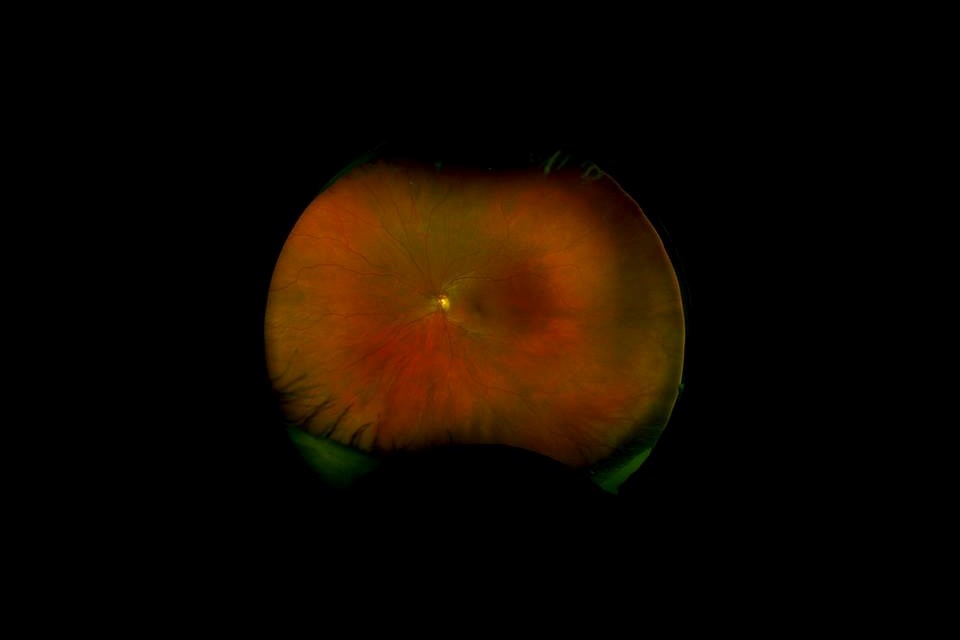Squamish’s David Thomson had no clue his retina had detached. At his routine eye exam about three years ago, he mentioned to the eye doctor he had noticed an increase in floaters – specks of black travelling across his eye.
“There was no pain,” he recalled.
Thomson was lucky. The optometrist detected a tear and the partial detachment of his retina, which was quickly repaired with surgery. Untreated, detachment can lead to blindness.
Thanks to new technology now available in Squamish, doctors can get a better view of patients’ eyes, allowing them to detect not only problems with the retina but also other health issues.
The $120,000 Optomap machine provides a panoramic digital image of the retina that is produced using laser scan technology.
The machine in Squamish is one of only a few on the entire west coast, according to Doctor Clark Bowden of Optomeyes at Garibaldi Village mall, where the machine is located.
It is also the only technology currently available that can show a wide, 82-per-cent view of a retina at once, Bowden said.
Retinal tears occur more often in those who are nearsighted, older or have suffered a head trauma, according to the CNIB, ironically an organization for which Thomson was working at the time of his diagnosis.
Before the machine, traditional methods of retinal imaging typically showed 16 per cent of the retina, “so we’d get the centre area where the optic nerve is and the macular, a very important area for glaucoma and macular degeneration. However, the remaining 80 to 90 per cent of the retina was not visible unless we dilate a patient’s eyes with drops,” Bowden said.
The eye drops make patients’ eyes blurry for several hours, which can be uncomfortable and inconvenient.
Bowden said patients “are pretty darn excited” not to have to get drops for the new machine.
The Optomap has been sight and possibly life-saving in the six weeks since it was installed in Squamish, said Bowden. So far, the imaging has caught several retinal tears, which will develop to retinal detachment and blindness if they are not caught early and lasered closed with surgery, he explained.
He also found a retinal tumour and evidence of multiple sclerosis, he said.
“We feel, as eye doctors, responsible for bringing sight-saving technologies to our communities,” Bowden said, of his pride at having the technology available in the district.
The exam takes only seconds. The patient sits facing the machine – which resembles a space-aged mini-fridge with a keyhole – looks into the hole, focuses on a green light for a split second until a flash of white light occurs when the technician takes an image.
The image of each eyeball is then instantly transferred to a computer screen as a 3D image for the doctor and patient to see.
Thomson said the imaging is great for his situation because each visit the doctor can compare new images to images from previous visits. “It is pretty amazing,” he said. “For a while [before the machine] the doctor was actually drawing pictures on the computer of what my eye looked like. Now we just look at pictures.”
Because many people in Squamish are very active, the eye conditions the doctors see reflect that reality, Bowden said.
“Head injuries, whether it is skiing or climbing, biking or kitesurfing, these kinds of things can get retinal tears,” Bowden said.
“We really need everybody to be scanned.”




